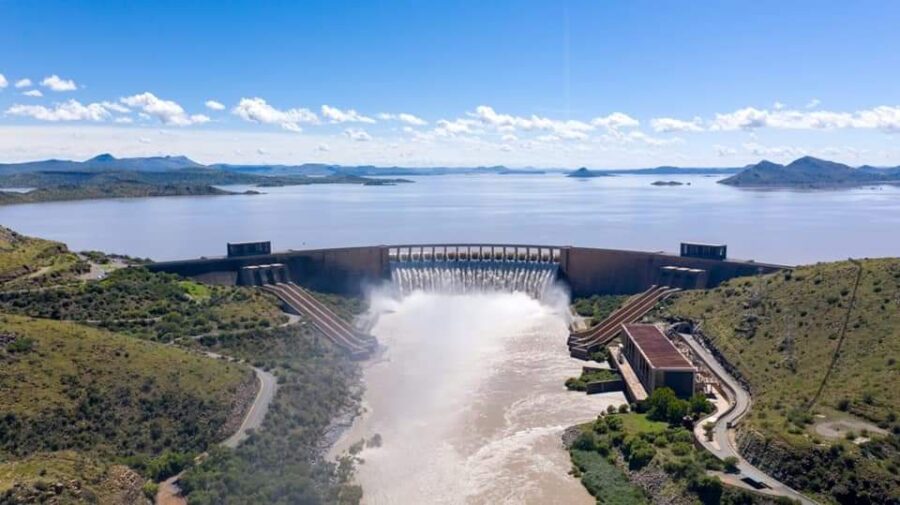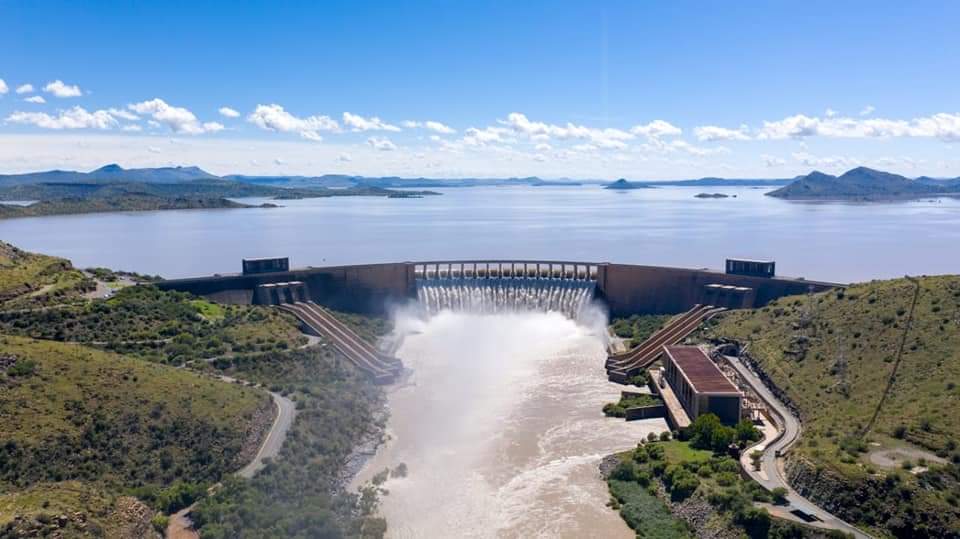
Winter Rainfall Boosts Dam Levels in South Africa
The overall outlook of South Africa’s national water levels improved slightly in the past week, BUT the Department of Water and Sanitation has reiterated its call to water users to exercise maximum caution when using water. The improvement is largely due to the expected winter rainfall in the Western Cape, and unexpected wet weather in […]

The overall outlook of South Africa’s national water levels improved slightly in the past week, BUT the Department of Water and Sanitation has reiterated its call to water users to exercise maximum caution when using water.
The improvement is largely due to the expected winter rainfall in the Western Cape, and unexpected wet weather in other parts of the country.
The weekly status of dam levels issued by the department shows that the volume of water has marginally moved up from 93.1% last week to 93.3% this week, which is a significant difference from last year’s 83.3%.
SA Dam Levels that dropped
The Integrated Vaal River System (IVRS) and Umgeni are the only Water Supply Systems that have experienced downward movements, with the IVRS dropping slightly from 101.0% to 100.7% and Umgeni from 100.5% to 100.3%.
SA Dam Levels that improved
Water supply systems that have experienced some sort of improvements include Algoa Water Supply System, which rose from 12.0% to 13.4% (ONLY SLIGHTLY DELAYING DAY ZERO!); Amathole moved up from 75.2% to 76.3% and Bloemfontein somewhat improved from 99.6% to 99.8%.
Cape Town increased from 70.8% to 72.5%; Crocodile West rose from 99.2% to 99.6%; Klipplaat improved from 100.2% to 100.3%; Luvuvhu gained from 100.9% to 101.1%, and Orange improved from 98.8% to 99.2%.
Unchanged SA Dam Levels
The following Water Supply Systems remain unchanged week on week: Polokwane 101.7%; UMhlathuze 100.2%; Crocodile East 100.3%, and Butterworth at 100.0%.
Dam Levels by Province
Six provinces have recorded upward movements in water levels, including the Free State from 100.7% to 100.8%, and Gauteng from 100.2% to 100.8%.
Limpopo expanded, albeit marginally, from 88.3% to 88.4%. Mpumalanga witnessed a tiny improvement from 95.1% to 95.2%. North West increased from 81.0% to 81.2%, and the most notable increment was in the Western Cape, moving up from 56.8% to 59.1%.
The provinces that have experienced downward movements in latest levels include the Eastern Cape from 70.3% to 70.2%, KwaZulu-Natal from 90.8% to 90.6% and Northern Cape decreased from 108.85 to 108.2%
Theewaterskloof Dam improved from 72.3% last week to 73.9%. Berg River increased from 81.5% to 82.2%. Kammanassie, which is alarmingly low, is now at 4.4% from last week’s 3.8%.

In Mpumalanga, both Jericho and Nooitgedacht Dams, which are part of the IVRS supplied by Mpama and Komati Rivers, have improved from 99.4% and 100.4% to 100.2% and 100.9% respectively. Kwena Dam, which is part of Crocodile East Water Supply System, is unmoved at 100.3%.
North West’s Hartbeespoort Dam, in the Crocodile West Water Supply System, increased from 98.0% to 99.4% and Bospoort somewhat gained from 102.2% to 102.4%.
Roodeplaat Dam, which is the component of Crocodile West supplied by Pienaars River, has moved down from 101.0% to 100.5%, and Vaalkop Dam declined from 92.9% to 91.9%.
The Vaal Dam, which is part of the IVRS, has decreased from 105.9% to 105.1%. Gariep Dam, which is part of the Orange River Water Supply System, has recorded a marginal increase from 98.6% to 99.4%. Vanderkloof Dam declined from 99.1% to 98.8% and Karee Dam, in the Northern Cape, sits at 28.1% from last week’s 17.9%.
KwaZulu-Natal’s Albert Falls Dam, which is an integral part of the Umgeni Water Supply System that supplies water to eThekwini Metro and surrounding areas, declined from 99.8% to 99.5%.
The Midmar Dam is also part of Umgeni WSS and has decreased moderately from 100.0% last week to 99.6% this week.Woodstock, which is on the Tugela River and is part of the IVRS, is steady and unchanged at 101.2%.
Groendal Dam, which is part of Algoa Water Supply System in the Eastern Cape, is critically low at 21.5%, moving slightly up from last week’s 21.3%.
The Kouga Dam is supplied by the Nelson Mandela Bay Metropolitan and is currently experiencing water supply challenges at 14.1%, while Nahoon Dam, which forms part of Amathole Water Supply System, has decreased from 96.8% to 96.2% this week.
De Hoop Dam, which is the biggest dam in Limpopo, remains unchanged at 100.3%. Flag Boshielo Dam, which is part of Polokwane Water Supply System, is also unmoved at 102.2%. Nandoni Dam, in the far north of Limpopo, recorded a minor increase from 101.2% to 101.4% and Middel-Letaba is almost empty at 2.1% of capacity.
Day Zero pushed back but still looms large
Despite the recent heavy rains that have made a small impact on Nelson Mandela Bay’s main supply dams, Day Zero has been pushed back but is still looming large, warns the DA.
The rainfall has resulted in a rise in the levels of the city’s two main supply dams. The Churchill Dam has improved to 15,68% of total capacity, while the Impofu Dam is standing at 10,35%.
The municipality has also apparently fixed more than 2 000 of the 3 000 active water leaks in the city.
“It is now of vital importance for us as residents to do our part to do all we can to bring down our consumption and make sure that we push Day Zero back and avoid 40% of the city running dry,” the DA said in a statement.
Sources – SAnews.gov.za and DA
